Country mansions in regional Victoria: From Noorilim to Campbell Point
From hosting future members of the Kelly Gang to Melbourne Cup winners and celebrities we know today – if only these walls could talk.

There’s some truly spectacular properties stretched across regional Victoria – some rich with history and others prime examples of the creativity in modern architecture.
These are the stories of the well-known and hidden gems in our backyard.
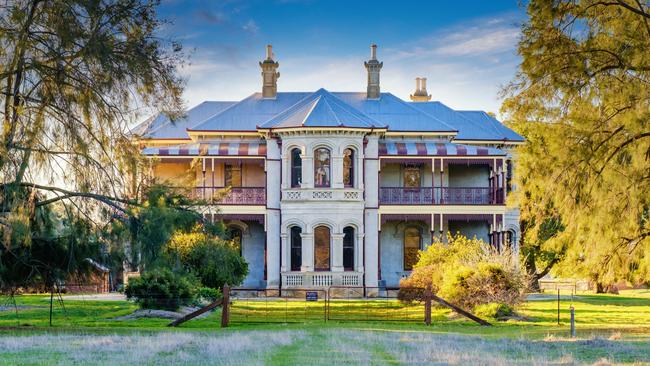
FAIRFIELD VINEYARD
Rutherglen, North East Victoria
This grand Italianate mansion was once home to the largest winery in Australia — perhaps even the southern hemisphere.
The property has opened its doors to vice-regal visitors and future members of the Kelly Gang.
Fairfield was settled in 1859 by English migrant George Francis Morris, flush with profit from the Beechworth goldfields.
He quickly put in some vines and by the 1890s, he was said to own the southern hemisphere’s largest winery.

The homestead was built in 1889 using cement-rendered bricks, reportedly made with clay from what is now a large dam behind the creeper-covered cellar.
In 2019, the property was sold for the first time in more than 40 years for an undisclosed amount, which is rumoured to have exceeded $12.5 million.
The estate was sold by Melba Morris-Slamen, whose great-grandfather was George Francis Morris.
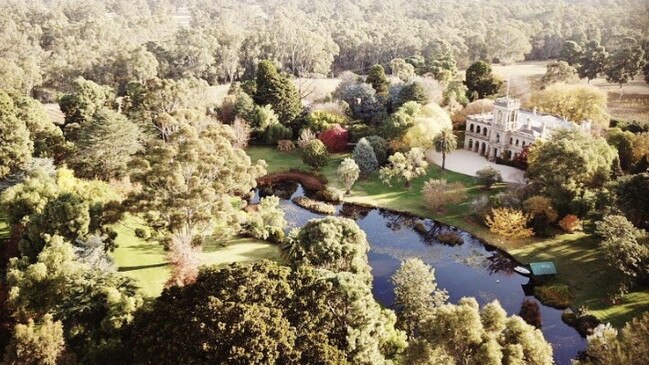
NOORILIM ESTATE
Wahring, northern Victoria
Another historic estate featuring a stunning Italianate homestead from the late 1800s, which is now also home to a winery, is Noorilim.
The homestead was designed by James Gall and built around 1880 for William Winter-Irving MLC.
The building – with stunning arches, columns, balustrading, loggia and a spectacular tower – has seven bedrooms, 15 fireplaces and the original Minton tiled floor. Construction was estimated to cost 20,000 to 70,000 pounds at the time.
It had a reticulated water system for the house and gardens, a gas lighting system and call-bell system for summoning the servants, with up to 10 working for the household back then.
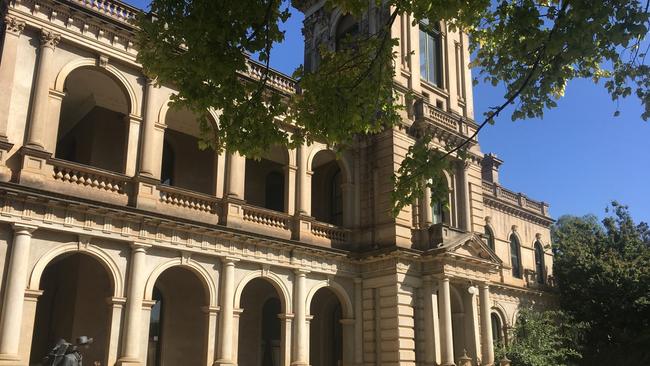
Noorilim sits among about five hectares of botanical gardens and a lake, with two trees listed by the National Trust – a sugar gum and a Moreton Bay fig.
William was a substantial local landholder and later member of the Legislative Council of Victoria. His father, Jock Winter, came to Australia from Scotland in 1840 and made a fortune from both the Victorian gold rush of 1851 and as a grazier.
William and his brothers were the largest-ever landholders in the district and at one time controlled about 250,000 acres, or 101,171 hectares.
Noorilim has had 11 owners since William, and has served as a thoroughbred horse stud, sheep and cattle station, and now vineyard.
Today the property is owned by the Menzies family, of Menzies International, and is still a working farm. It is currently closed to the public.
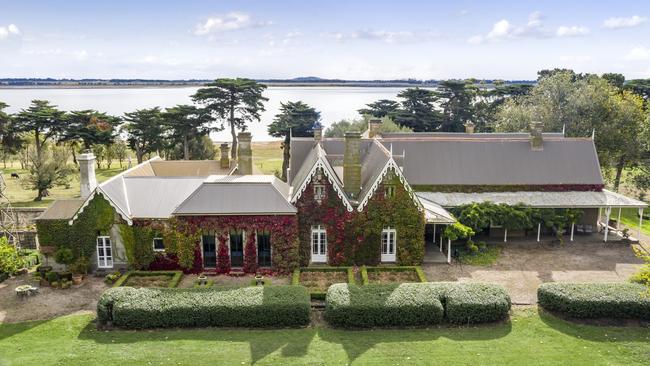
CHOCLYN
Camperdown, Western District
Chocolyn, originally part of Purrumbete Station established in 1839, was acquired by William Adeney in 1843.
It was used as an out-paddock before he developed the property and built the first stage of the bluestone homestead around 1853.
In recent years the property has been extensively restored and renovated. It was listed for sale for more than $5.5 million earlier this year and sold in June.
The homestead, on the shore of Lake Colongulac, includes eight bedrooms, three bathrooms, numerous living spaces including a grand dining room, sitting rooms with lake views and a library.
Some trees in the garden are said to be from the 1870s.
Historically the property has been used as a working farm for sheep breeding and grazing together with beef fattening.

NAMBROK ESTATE
Nambrok, Gippsland
The landmark estate’s grand Victorian homestead was built in the 1860s for pastoralist and Gippsland pioneer John King, who was the grandson of NSW’s third governor Philip King.
As the centrepiece of the property, it has views of the Great Dividing and the Strzelecki Ranges.
John and Edith Widdis bought the property in 1908 and in 1915 Edith became the first female owner to triumph at the Melbourne Cup with Patrobas, who was trained and stabled at Nambrok.
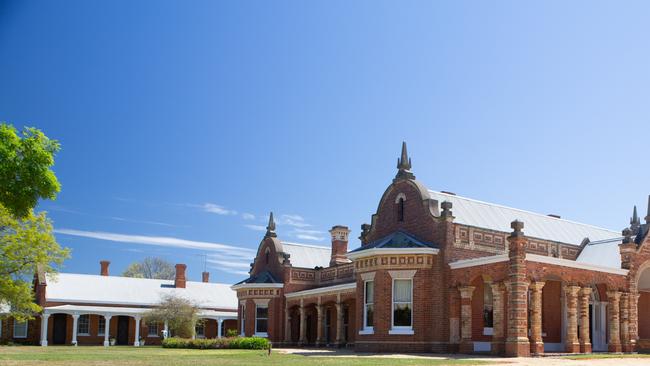
The prominent McGauran family sold the 989-hectare property late last year for an undisclosed price. However, it was understood to be quoted at $12 million. It initially hit the market with price expectations of about $20 million in 2019.
The new owners are believed to be an Australian family.
The McGauran family, which includes former Agriculture Minister Peter McGauran and former Senator Julian McGauran, developed the holding during their ownership to make it one of Australia’s most significant properties.
The estate also features a five-bedroom guesthouse, a three-bedroom manager’s residence, a mod-grass tennis court, original stables, several sheds, 18 catchment dams and four bores.
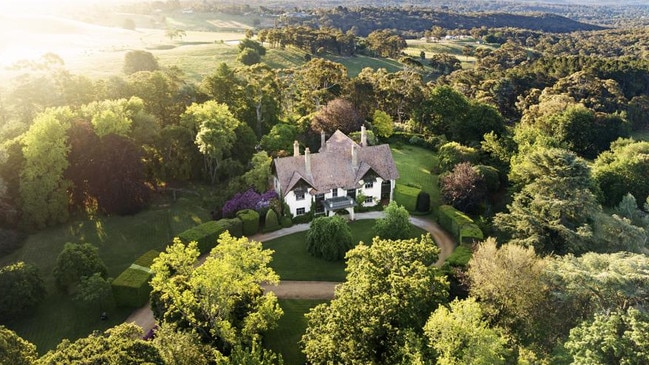
WOMBAT PARK
Daylesford, central Victoria
The historic Wombat Park estate was established by William Stanbridge in 1854, with the magnificent homestead designed by notable Melbourne architect and advocate for the Arts and Craft movement Rodney Alsop around 1910.
It was on the market last year, with an asking price of more than $7.5 million.
The late property owners’ daughter, Mia Pithie, said at the time the grazing property featured rhododendrons and camellias that were more than 100 years old and a few plants are also on the National Trust register.
Ms Pithie’s late parents, Alastair and Isabel Mackenzie, purchased Wombat Park in 1996.
Listing agents Kay & Burton said the property had only been owned by two families in almost 170 years.

LARUNDEL ESTATE
Cargerie, Western District
Described as “one of Victoria’s finest country estates”, Larundel Estate’s centrepiece is a grand bluestone and polychrome brick homestead dating back to the mid-1800s.
It was originally built by the Austin family, who were responsible for a generous donation that created the Austin Hospital.
The property now features parking for nine cars, has a tennis court, croquet lawn, helipad and airstrip.
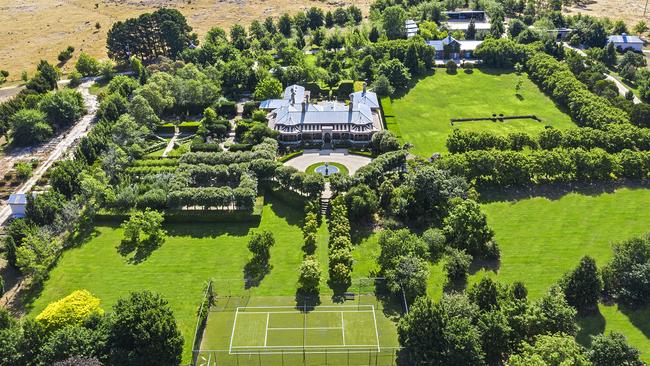
The homestead is set in a two-hectare garden designed by renowned landscape designer Paul Bangay.
Previous owners of the property, the Kimberley family, owners of Just Jeans, undertook major renovations of the property in the 1990s.
Ruyi Australia Group, a subsidiary of Chinese textile giant Ruyi Group, then purchased the 942-hectare property in 2011 for $14 million.
It was listed on the market early last year for about $20 million.
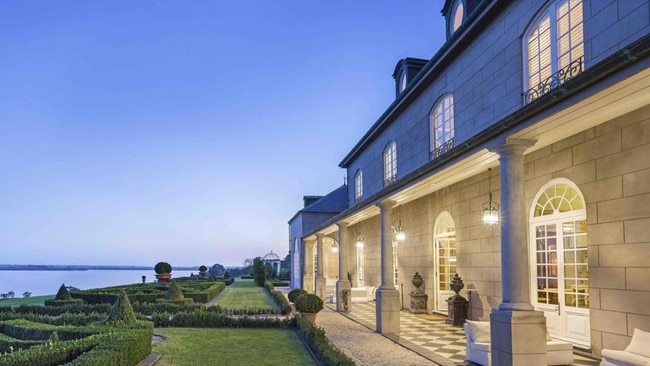
CAMPBELL POINT HOUSE
Leopold, Geelong
While this grand mansion may look like something out of the history books, it was actually built this century.
The French chateau-inspired mansion on the shore of Lake Connewarre was built as a private home for Aaron Parkhill, a nephew of Westfield co-founder and billionaire Frank Lowy, and wife Meg Blackhall in 2008.
Materials for the property were sourced from all over the world. It now operates as a hotel, restaurant and wedding venue.
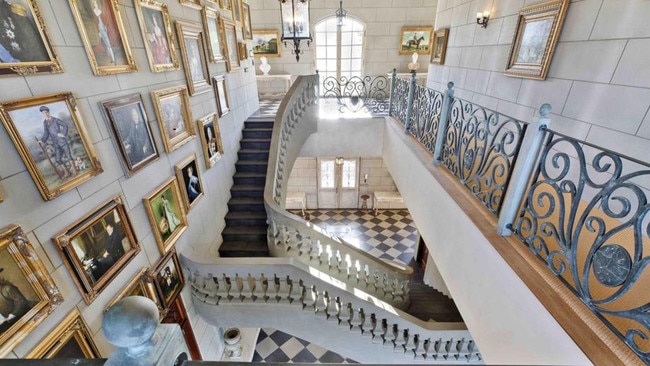
From an episode of MasterChef with guest chef Marco Pierre White to Melbourne socialite Rebecca Judd’s baby shower – the luxury estate has played host to the stars.
Justin Bieber and Adele are even rumoured to have booked a stay but were unable to land a helicopter, which you now can.

The master suite, which takes up the entire second floor of the mansion, starts from $750 a night.
Campbell Point House was listed for sale early last year seeking $20-$22 million and reappeared on the market in March this year with a new asking price of $16-$18 million.
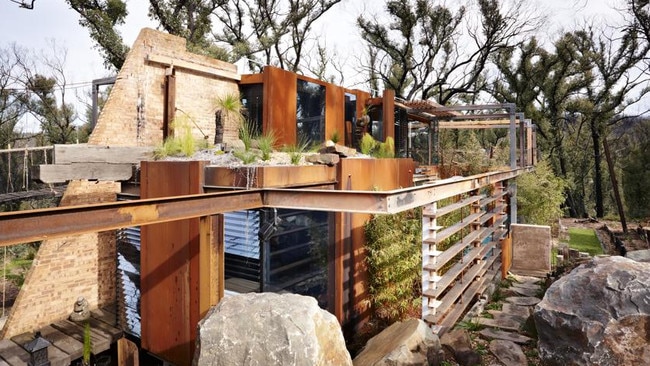
CALLIGNEE II
Callignee, Gippsland
This award-winning, architecturally designed house rose from the ashes.
A charred Black Saturday site was transformed into the first home featured on Grand Designs Australia.
Construction manager Chris Clarke lost his Gippsland home, just weeks after completion, in the 2009 fires.
The new “bushfire-resistant house” designed by Hamilton Design was made from materials that were salvaged from the fire, recycling and reusing as much from the first house as possible.
The home was sold in 2017 for $475,000.
You can now stay in the off-the-grid home for $425 a night through Airbnb and Riparide.
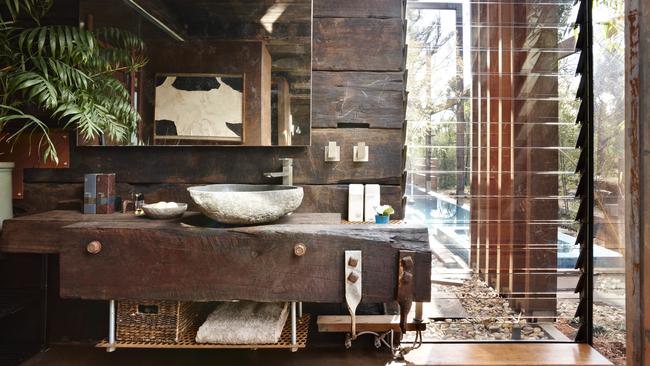
Rain water is harvested onsite, it is solar powered and waste from the home broken down via a Biolytic Blackwater system sunken into the earth.
There’s a 19-metre lap pool and an “artistic masterpiece ensuite” with a shower that “offers no privacy but invites you to become one with the surrounding”, according to the listing on Airbnb.
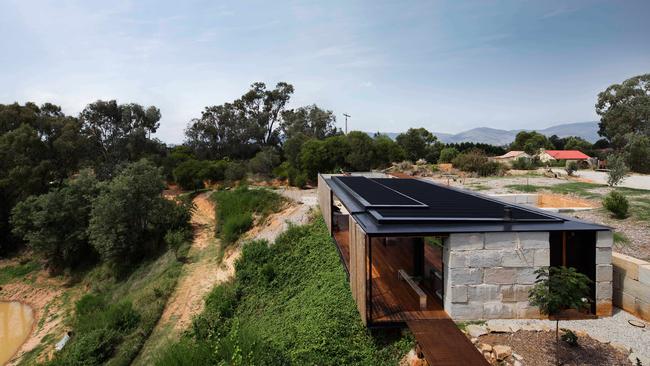
SAWMILL HOUSE
Yackandandah, North East Victoria
The award-winning Sawmill House is another spectacular regional Victorian property that featured on Grand Designs Australia.
It was built on the edge of what was originally an old gold mine quarry and then the local sawmill until the 90s.
Sculptor and builder Ben Gilbert worked with architecture studio Archier, his brother Chris as lead designer, to build the one-bedroom family home.
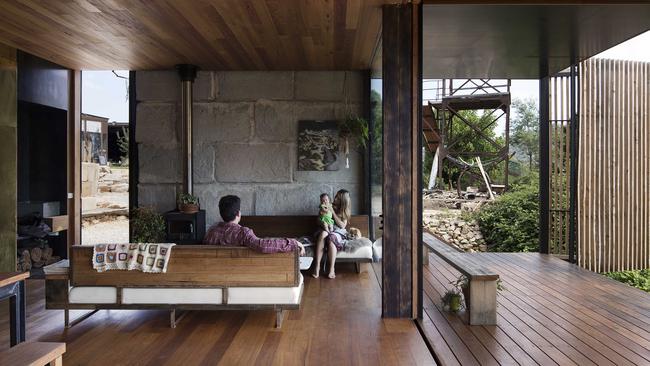
Ben said the birth of his child hurried the progress of the 2014 project and meant child-friendly design changes had to be made.
They used 270 one-tonne blocks of reclaimed concrete to form the perimeter – each block a by-product of excess concrete from projects in the region that would otherwise go to waste.
In 2018, the home was listed on Love Home Swap, seeking a house swap arrangement for a holiday in Europe.
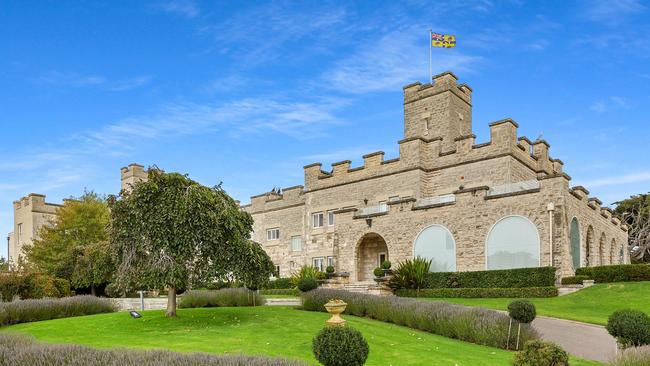
DELGANY ESTATE
Portsea, Mornington Peninsula
This castle-like building was designed by influential Australian architect Harold Desbrowe Annear and built in 1925 as a grand country-summer house for Harold Armytage and his sisters.
Harold, of Como fame, died just after it was completed but his sisters lived at Delgany until the early 1940s.
During World War II, the house was used as the 62nd Australian Army Camp Hospital.
It was then sold to nuns in 1947 who extended and converted the house into a deaf school.
When the Dominican Sisters St Mary’s School for the Deaf and Dumb opened it was the only Catholic boarding school for deaf children in Australia.
The building was sold in 1985 and opened in 1988 as a Peppers restaurant and luxury country retreat.
In 2006 a syndicate was formed to redevelop the country hotel into the housing and apartment complex it is today, with McGauran-Soon appointed as architects.
There are 18 apartments, nine townhouses and six houses.
A multi-level three-bedroom apartment sold for $3.65 million in February this year.





